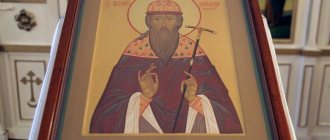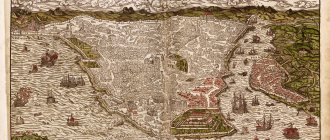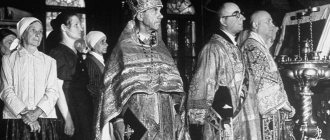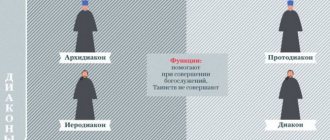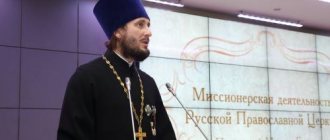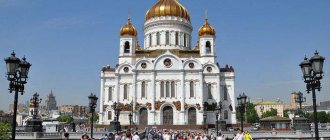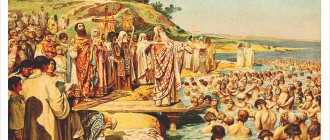The canonization of saints is a special procedure for canonizing the saints of God. All those righteous people whose names we see in the church calendar received this status for their ascetic life and repeated miraculous help to everyone who turns to them.
Those people to whom believers can turn in prayer are not necessarily officially glorified as saints. Already in the word canonization, which came to us from the Greek language, there is a verb “to legitimize.” That is, this procedure helps to canonize certain righteous people.
It has an official status, so it very often lasts for decades, while people pray in front of the graves of the righteous. It seems clear that the man is a saint. So why such a lengthy procedure? How did this happen in the first centuries of Christianity?
What are the criteria for the canonization of saints
An Orthodox Christian is canonized by the Church as a saint after death. The most common conditions for canonization are:
- sanctity of life;
- compliance of the ascetic’s faith with Orthodox dogma;
- veneration by the church people
- the gift of miracles during life and/or after death (as evidence that Divine grace acts through the ascetic);
- incorruptibility of the relics (as an additional, non-defining criterion);
- suffering for the Orthodox faith.
A separate criterion is martyrdom for the faith.
Who are the saints?
Perhaps it will be a revelation for someone that every saint is an ordinary person of flesh and blood who once lived on Earth. Ordinary in the sense that he ate and drank, slept, breathed, felt everything that is inherent in each of us. But a saint differs from an ordinary person in that this person was able with his life to know and realize the Lord’s Plan for eternal salvation.
The veneration of saints has been established in Christianity since ancient times.
One can imagine that a holy person is such a unique being who does not sin, who knows neither temptations, nor passions, nor desires. This is absolutely not true; many ascetics experienced terrible spiritual trials. They were tormented by gluttony, and fornication, and anger, and vanity. The difference is not in what these people felt and what they encountered in life, but in how everyone reacted to it and how they overcame it.
For example, in the 4th century there lived a young man named Ephraim. He came from a poor but pious religious family. But the young man was proud, arrogant, reacted sharply and irritably to everything that he did not like. He was lukewarm towards faith - he did not deny, but very often doubted the Providence of God.
And then one day it happened that the young man was late home and was forced to spend the night in the field with the shepherds. At night, some of the sheep were dragged away by wolves, and Ephraim was accused of bringing thieves to the herd. The young man was put in prison, where he saw other prisoners, supposedly also innocent.
The young man began to be indignant at the injustice that befell all the prisoners, and the Lord opened his eyes. Ephraim suddenly remembered how in anger he drove one cow out of the pen, and she soon died. His neighbors also began to remember how they had previously perjured themselves in court, told lies, and committed many other bad things.
And Ephraim suddenly realized that nothing happens in life for nothing. There are no innocent people, for the number of human sins exceeds the number of drops in the sea. Since then, the young man has completely changed. He began to lead a deep spiritual life, especially struggling with his anger and irritation. And his efforts were not in vain - Ephraim was honored to stand next to the Lord in the ranks of saints. The Orthodox Church remembers the memory of this ascetic on January 28.
Icon of St. Ephraim
This example shows us that a holy person can initially be endowed with a variety of sins and passions. But by repenting of them, correcting his life, trying with all his might to be with God, a person is able to overcome any sins.
Important! We can say that what distinguishes a holy person from any other is precisely the determination to get rid of vices at all costs and draw closer to God.
Another very striking example is St. Mary of Egypt. She was a very beautiful girl who knew nothing about God, led a dissolute lifestyle, and was a harlot. One day, without wanting to, she found herself near the doors of the temple. People entered it to pray, and Mary decided to do the same. But she didn’t succeed - an unknown force held the girl tightly, not allowing her to even cross the threshold of the temple.
Of course, she was scared and perplexed, even angry. And at that moment a revolution took place in her soul - she suddenly saw clearly who she was and what kind of life she was leading. She became so disgusted with herself that she fled to the desert beyond the Jordan River, where she fasted and prayed in complete solitude for 40 years.
Icon of the Venerable Mary of Egypt
During all this time, she saw a person only twice - it was a monk who buried her after death. Decades of repentance allowed the former harlot to so cleanse her soul of sin that when she prayed, she floated in the air. And today Mary of Egypt is one of the most famous and revered holy women in the Orthodox Church.
Read about Saint Mary:
- Icon of Mary of Egypt
- Akathist to St. Mary of Egypt
- Prayers to the Venerable Mary of Egypt
What do these examples, of which there are countless more, tell us? That a person is free to choose his own path - whether he is with God or not. Indulge in your own sins and passions, which exist in absolutely every person, or fight against them. Lead your soul to destruction, or to eternal salvation. These questions are completely within the power of each person.
Who decides on the canonization of saints?
The process of canonization is initiated by clergy and laity. Next, the diocesan bishop transfers the case to the diocesan commission for the canonization of saints. Materials for canonization in the Russian Orthodox Church are considered, studied and checked by the Synodal Commission for the canonization of saints. The decision on canonization is made by His Holiness the Patriarch, the Bishops' or Local Councils. The Patriarch can bless the veneration of a locally revered (venerated in one diocese or region) saint, the Bishops' or Local Councils - church-wide veneration.
Beatification
- Beatification is usually initiated by the diocese on whose territory the righteous person is buried. She also begins collecting materials about his life, including documents confirming his holiness and exceptional virtues, his writings and information about posthumous miracles performed through his intercession.
- Typically, such miracles are cases of medically inexplicable healing. To be beatified, it is enough to establish one such case (this condition is not necessary for the beatification of a martyr for the faith).
- This is the so-called formal procedure. There is also an equivalent beatification, which occurs when the cult of a given person already exists. In this case, proof is required that he has been revered for at least a hundred years.
- To verify all the information, a special tribunal is created, which hears testimony from both supporters of beatification and opponents. Arguing against the beatification of a candidate avoids untimely and hasty decisions.
- Then the collected documents are sent to the Roman diocese, where they are examined by another commission, which may even include representatives of other religions and secular people. This commission must determine whether the miracle attributed to the candidate has a scientific or at least logical explanation. The case is then considered by the Vatican's Congregation for the Causes of Saints (successor to the Congregation of Rites). The final decision to beatify a martyr or righteous person is made by the pope, after which a solemn mass is held.
- The process of beatification begins no earlier than five years after the death of the ascetic. However, the pope, by his decision, can shorten this period or cancel it (as in the case of Mother Teresa and Pope John Paul II).
- The veneration of the blessed is not obligatory for the entire church and is usually of a local nature (in some dioceses or in one ecclesiastical region).
The history of the canonization of ascetics
In the I–IV centuries. the veneration of saints was determined by the community and legitimized by the bishop. Later, the veneration of saints and the general church dissemination of such veneration was determined by the inclusion of the name of a deceased member of the community in the list of martyrs (martyrology). When veneration became widespread, i.e. church-wide character, it was confirmed by the head of the Local Church.
In the Russian Orthodox Church, canonization was performed locally by diocesan bishops. The first example of a conciliar decision on canonization is the decrees of the church councils of 1547 and 1549.
In our time, the local veneration of an ascetic as a saint requires the permission of the patriarch; for church-wide recognition of a saint, the decision of the Council of Bishops is required. If a saint is canonized in one of the Local Orthodox Churches, his name is reported to the heads of all the others. In these Churches, a decision may be made to include the newly glorified saint in the church calendar. Thus, in the Russian Orthodox Church, St. John the Russian Confessor, St. Herman of Alaska and Silouan of Athos are venerated, although St. John of Russia and Silouan of Athos were canonized by the Orthodox Church of Constantinople, and Herman of Alaska was glorified by the American Orthodox Church.
***
Rev. Athanasius of Paros in a letter to his disciple: “You wrote to me that recently, on the day of memory of St. John the Theologian, you and your friends had a conversation about the new martyrs, and that some of them, not only those who knew little, but also scientists, argued that the holy martyrs cannot be venerated without the permission of the Great Church, and you seemed to want to object, but you were embarrassed, afraid , as if their words were not true. You write that you wrote this to me so that I would laugh, but I did not laugh at it because although those who express such judgments are worthy of laughter, the topic itself is not funny, but decent and holy. Therefore I was more distressed; I was especially upset by the fact that educated people speak like uneducated and illiterate people. Where have these “scientists” read about this, and where has it been heard in the Church of God, that the holy martyrs await the earthly judgment of their martyrdom, so that this earthly judgment testifies to those who sealed their end with the confession of the holy faith and whose hero Christ immediately and immediately made you worthy of a heavenly crown?
Orthodox Life
In July of this year, the canonization of the Athonite elder John of Vyshensky will take place. Who can become a saint, what are the criteria for canonization and how to know holiness, answers Archimandrite Tikhon (Sofyichuk), chairman of the canonization commission of the Kyiv diocese.
– Father, how are saints canonized?
– The history of the Orthodox Church is the history of its holiness. Each Local Church only fully realizes its spiritual calling when it not only reveals within its fold the ascetics of piety, but also collectively glorifies these saints as canonized saints.
The Church gave the Christian world a great host of devotees of piety, martyrs and confessors.
The Church calls saints those people who, having been cleansed from sin, acquired the grace of the Holy Spirit and demonstrated His power in our world.
Each saint with his own special life shows the path to holiness and acts as an example of those walking along this path. The Church teaches: saints of God, making up the ranks of the saints, pray before the Lord for living brothers in faith, to whom the latter pay prayerful honor.
The canonization procedure was developed and strictly regulated relatively recently. In the I–IV centuries. the veneration of saints was determined by the community and legitimized by the bishop. Later, the veneration of saints and the general church dissemination of such veneration was determined by the inclusion of the name of a deceased member of the community in the list of martyrs (martyrology). When veneration assumed a universal, i.e., church-wide character, it was confirmed by the head of the Local Church.
In the Russian Orthodox Church, canonization was performed locally by diocesan bishops. The first example of a conciliar decision on canonization is the decrees of the church councils of 1547 and 1549.
Councils of 1547 and 1549 Modern icon
– What are the conditions for canonization?
– Canonization is the recognition by the Church of any deceased ascetic of piety as one of its saints. The word “canonization” (Latin canonizatio – to take as a rule), borrowed from Western theological language, is used in the Russian Church along with the expression “canonization” (“containment”, “incorporation” into the ranks of saints). Greek hagiology uses a term meaning "proclamation" (saint).
The basis on which the deceased righteous are canonized as saints was formed in the Ancient Church. Over time, one or another basis has gained priority, but in general they remain unchanged.
The term “canonization” - a Latinized transcription of the Greek verb meaning “to determine, to legitimize on the basis of a rule” - was introduced into circulation by Western theologians quite late. In the Greek Church there is no exact analogy for this term, therefore in such cases it used the phrase “canonization” or “containment, inclusion in the ranks of saints.”
The main condition for the glorification of saints at all times was the manifestation of true sanctification, the holiness of the righteous. Evidence of such holiness could be:
1. The Church’s faith in the holiness of the glorified ascetics as people. Those who pleased God and served the coming of the Son of God to earth and the preaching of the holy Gospel. 2. Martyrdom for Christ or torture for the faith of Christ. 3. Miracles performed by a saint through his prayers or from his honest remains-relics. 4. High church primate and hierarchal service. 5. Great services to the Church and the people of God. 6. A virtuous, righteous and holy life, not always evidenced by miracles. 7. In the 17th century, according to the testimony of Patriarch Nektarios of Constantinople, three signs were considered conditions for the presence of true holiness in people:
a) Orthodoxy is impeccable; b) the fulfillment of all virtues, followed by confrontation for faith even to the point of blood; c) God's manifestation of supernatural signs and wonders.
8. Often, evidence of the holiness of a righteous person was the great veneration of him by the people, sometimes even during his lifetime. Along with the faces of the saints, according to the nature of their church service - martyrs, saints, saints, fools for Christ's sake - the saints also differed in the prevalence of their veneration: local church, local diocesan and general church. Today, only locally revered saints are distinguished, whose veneration does not extend beyond the boundaries of any diocese, and church-wide saints, revered by the entire Church. The criteria for glorifying church-wide and locally revered saints are the same. The names of saints glorified by the entire Church are communicated to the Primates of the fraternal Orthodox Local Churches for inclusion in the calendar.
– What is the practice of glorifying the saints today?
– The practice of glorification is as follows: first, the Diocesan Commission for the Canonization of Saints considers materials on glorification. If the decision is positive, they are transferred to the synodal commission, which, if approved, sends them to the Synod. The day of the decision of the Holy Synod is included in the calendar as the day of glorification of the saint. Only after this is an icon painted for the saint and a service compiled. As for the locally revered saints, the difference is only in the degree of glorification within the earthly Church. They also write the icon and service. In the Orthodox Church, canonization is celebrated with a solemn service in honor of the newly glorified saint.
The petition and documents of the ascetic of the faith are submitted to the ruling bishop to study the possibility of canonization. Attached are materials testifying to the person’s holiness. A detailed biography of the ascetic is being compiled, fully reflecting the feat of faith. Documents are sent on the basis of which the biography is compiled: all archival copies, medical evidence of healings, memories of archpastors, pastors and laity about the pious life and gracious help of the ascetic revealed during his life or after his death. The question of the veneration of the ascetic by the people requires especially careful coverage.
Meeting of the Commission for the Canonization of Saints at the Holy Synod of the Ukrainian Orthodox Church. Photo: canonization.church.ua
It is worth recalling the decision of the Holy Synod of the Russian Orthodox Church of December 26, 2002 “On the streamlining of practices related to the canonization of saints in the dioceses of the Russian Orthodox Church.” Then it was decided that when preparing the canonization of saints, the following circumstances should be taken into account:
1. Materials for the canonization of an ascetic must be carefully prepared and considered by the diocesan commission for the canonization of saints in accordance with the decision of the 1992 Council of Bishops. 2. The publication of unverified materials related to the life, exploits and suffering of clergy and laity of the Russian Orthodox Church is unacceptable. With the blessing of the ruling bishop, all evidence must be verified locally. The ruling bishop can give a blessing for the publication of such materials only after personally familiarizing himself with their content. 3. The practice of collecting signatures in dioceses for the canonization of certain persons is unacceptable, since it is sometimes used by various forces not for church purposes. 4. There should be no haste in the canonization of recently deceased revered clergy and laity. It is necessary to carefully and comprehensively study the documentary materials of their life and ministry. 5. The relics of canonized ascetics are acquired with the blessing of His Beatitude Onuphry, Metropolitan of Kyiv and All Ukraine. The ruling bishop must report on the results of the acquisition of holy relics to His Beatitude Onuphry, Metropolitan of Kyiv and All Ukraine.
6. The relics of uncanonized ascetics cannot be displayed in churches for veneration.
In our time, when considering cases of canonization of victims for Christ, it is necessary to apply additional criteria, taking into account the circumstances of the era. In each specific case concerning the glorification of one or another confessor of the faith of the twentieth century, the commission carefully studies archival materials, personal testimonies, if sometimes it is possible to find and interview eyewitnesses of the events or those who, without being eyewitnesses themselves, keep memories of these people or their letters , diaries and other information.
The subject of careful study is the interrogation materials. All persons who suffered during the years of persecution were subsequently rehabilitated by the state. The authorities recognized their innocence, but one cannot conclude from this that all of them can be canonized. The fact is that people who were subjected to arrests, interrogations and various repressive measures did not behave the same in these circumstances.
The attitude of the repressive authorities towards the ministers of the Church and believers was clearly negative and hostile. The man was accused of monstrous crimes, and the purpose of the prosecution was one - by any means to obtain a confession of guilt in anti-state or counter-revolutionary activities. The majority of clergy and laity denied their involvement in such activities and did not admit either themselves or their loved ones, acquaintances and strangers to be guilty of anything. Their behavior during the investigation, which was sometimes carried out with the use of torture, was devoid of any slander or false testimony against themselves and their neighbors.
At the same time, the Church finds no grounds for the canonization of persons who, during the investigation, incriminated themselves or others, causing the arrest, suffering or death of innocent people, despite the fact that they themselves suffered. Cowardice shown in such circumstances cannot serve as an example, for canonization is, first of all, evidence of the holiness and courage of the ascetic, which the Church of Christ calls on its children to imitate.
Copies of archival investigative cases in which the ascetics were convicted should be attached to the description of the life of a martyr or confessor. Namely: a questionnaire of the arrested person, all protocols of interrogations and confrontations (if any), an indictment, a “troika” verdict, an act of execution of the sentence or another document certifying the time, place and circumstances of the ascetic’s death. If the martyr or confessor was arrested several times, then it is necessary to submit copies of the above materials from all criminal investigation cases.
There are many other aspects to the issue of glorifying a martyr or confessor, which can only be partially reflected in the materials of investigative cases, but without a decision from the relevant authorities it is impossible to glorify a person. It requires special attention to clarify a person’s attitude to the schisms that took place at that time (Renovationist, Gregorian and others), behavior during the investigation: was he a secret informant of the repressive authorities, was he called as a false witness in other cases? Establishing these facts requires a lot of work from many people - members and employees of diocesan commissions for the canonization of saints, the work of which is organized and controlled by the ruling bishop.
The archives of the state, whose funds contain documents about the history of the Church and the persecution of it, unfortunately, only recently and not in full became available for research. The history of the 20th century Church has only just begun to be studied. In this regard, researchers are discovering many facts that were previously unknown, as well as their religious and moral side, which many were not even aware of. Therefore, the strictness of the Church’s position in matters of glorifying new martyrs and confessors is dictated not by bureaucracy and formalism, but by the desire to avoid mistakes due to incomplete information and to make the right decision.
– Why in ancient times were martyrs glorified immediately after death, without a meeting of the commission or the Synod?
– In the Ancient Church, the main list of revered saints consisted of the names of martyrs - people who voluntarily offered themselves as a “living sacrifice”, testifying to the glory and holiness of God. Therefore, already in the 2nd century in church sources one can find several evidence of celebrations along with days of remembrance of gospel events and days of remembrance of martyrs. The number of saints in the Church in the period before the Ecumenical Councils can be judged from the surviving calendars, martyrologies and minologies. The most ancient of them are the martyrologies of the 3rd–4th centuries. in its main part there is a translation of Latin court records, the so-called proconsular acts (Acta Proconsuloria), or some processing of them. These acts, by order of Emperor Constantine, were kept in all major cities of the empire. In addition to the actual acts of the Roman authorities from this time (I–IV centuries), the first attempts on the part of the Church to write the lives of this or that martyr, testifying to his veneration, have also been preserved. So, for example, in the acts of the martyr Ignatius the God-Bearer, Bishop of Antioch (+107 or 116), it is said that the compiler of the description of the martyrdom of Ignatius noted the day and year of his death in order to gather on this “day of remembrance of the martyr” for agapes dedicated to the holidays days or days in honor of this saint.
Records about saints in the Ancient Church are quite brief, since in the Roman court, which usually took place in the presence of “notaries” - stenographers, only the questions of the judges and the answers of the accused were recorded. Often Christians bought these records. For example, in the acts of the martyrs Tarakh, Provos and Andronikos (who suffered in 304), it is noted that Christians paid the Roman authorities 200 denarii for them.
These court records took the form of an interrogation record. First, they indicated the name of the proconsul in whose region the trial was held, then the year, month and day, and sometimes the time of day of the trial, and, finally, the interrogation itself, which was a dialogue between the judge, his servants and the accused. At the end of the interrogation, the proconsul called for it to be read aloud, then the judge and his assessors made a decision and read the sentence. The execution of the sentence was carried out in the absence of a judge.
From this diagram it is clear that only the interrogation of the martyr was fully described in the court records and his testimony and death were reported; there should not have been any other details in them. Later, with the increase in the number of holy martyrs in the Church, these proconsular acts were placed in special collections-minologues, in which the sufferings of each martyr on the day of his memory were noted by month.
Such historical sources perfectly illustrate the veneration and celebration of a dead Christian as a saint. All those who suffered for Christ were counted among these; without any investigation of their lives, they were included in the lists of saints by virtue of their feat - cleansing by martyrdom. At times, the Church, already knowing about the upcoming interrogation of an arrested Christian, sent an observer to him for trial as a saint, obligated to record the feat of testimony of the interrogated. At some episcopal sees, even special persons were appointed for this purpose. Thus, Pope Clement appointed seven deacons to this ministry in a certain area of the city of Rome. These records were called passio (suffering), later they were combined with the minologi, and their readings were placed according to the days of the Roman calendar. By their number, one can determine the number of saints in the Ancient Church, as well as which feat of holiness was revered in the Church before others. Thus, in the oldest Western calendar, which belonged to a certain Dionysius Philocalus and known as the Bucherian calendar, 24 days of remembrance of martyrs are noted, in addition to this - the feast of the Nativity of Christ and a list of holy popes. By the end of the 4th century, after the era of persecution, “the calendar was full,” that is, the number of saints in the year had increased so much that there was not a single day that did not have the memory of its saint. For the most part, most of them were martyrs. Asterius, Bishop of Amasia, speaks about this: “Behold, the whole universe is filled with the circle of Christ’s ascetics; there is no place or season without their memory. Therefore, if any lover of the martyrs wanted to celebrate all the days of their suffering, then for him there would not be a single day in the year that was not festive.”
However, such a complete ancient Christian calendar has not survived to this day. In the oldest, now known calendars of Western origin, which were called martyrologium (martyrdom), - Gothic, Carthaginian and others, memories are not distributed over all numbers of the year. In the most ancient eastern calendar, compiled in 411–412. in Syria, there are more “memories” of saints, but also not on all days of the year. However, it should be noted that all these calendars were compiled only for individual dioceses, and martyrs from one date were not included in another due to their remoteness.
– Some today want to canonize one outstanding figure, without wanting to understand his life, others want another, patriots need a holy warrior, the military needs a general, etc. There are many wonderful and even outstanding personalities in our history, but holiness is It's a completely different matter.
– Every nation has its own heroes whom it reveres and looks up to, wanting to imitate their feat. The Church also has its own Heroes of the Spirit - these are saints. We recently celebrated the feast of All Saints who shone in the Russian land. And there is nothing wrong with the fact that people want to see their compatriots close in time as role models. It is important that there are no vanity or any other pragmatic reasons for glorifying this or that ascetic, because this can divide people. Such cases occurred during the time of the Apostle Paul (I am Cephas, I am Pavlov), divisions were also observed in the Church, when some revered St. Basil the Great more, calling themselves Basilians, others – St. Gregory the Theologian, calling themselves Gregorians, and others – Ionnites, revering the saint more. John Chrysostom, but these three saints appeared in the 11th century to Metropolitan John of Euchaitis and stopped the discord between their admirers, saying that they were equal before God. On this occasion, the feast of the Three Saints was established on January 30.
The saints are one in the Lord and want us to achieve holiness and unite with God - this is the highest veneration for them, since this, according to the Apostle Paul, is the good will of God: “The will of God is your sanctification...” (1 Thess. 4 :3). When we perform funeral services for deceased Orthodox Christians, we pray: “With the saints, rest the soul of your departed servant...” But this does not mean that all Orthodox deceased Christians, even if they occupied high church, military or public positions, can serve as an example for imitation and veneration like saints. The Church is not a legal organization where everything is decided according to earthly laws. The Church is a living organism that lives by the Holy Spirit. This is why canonization commissions have been created within the Church and dioceses, which, based on the above criteria, determine whether to venerate this or that ascetic or not. Holiness reveals itself, and people only state this fact, which is no longer needed by the saints, since they are already glorified by God, but by us for prayer help and as an example to follow.
Saints are those people who, having been cleansed from sin, acquired the Holy Spirit and demonstrated His power in our world. Those whose pleasing to God was revealed to the Church as a reliable fact, whose salvation was revealed even now, before the Last Judgment, are revered as saints.
We are all called to holiness. And indeed, we are sanctified in the Church, whose Head and Firstfruits is the Lord Jesus Christ: “If the firstfruits is holy, then the whole is holy, and if the root is holy, then so are the branches” (Rom. 11:16). At the Divine Liturgy before Holy Communion we hear a cry referring to us: “Holy to holies!” Just as a star differs from a star, so in the firmament the saints differ in their degree of holiness. Some people internalize this holiness by becoming saints, others do not. Everything depends on the free will of man.
Interviewed by Natalya Goroshkova

